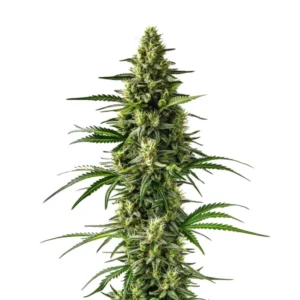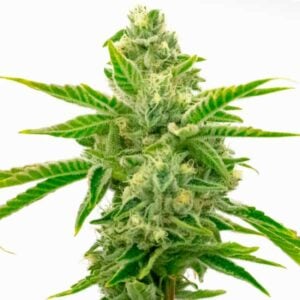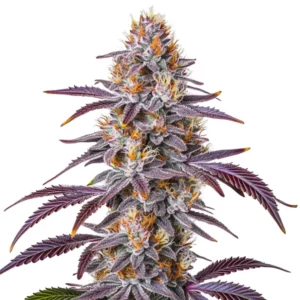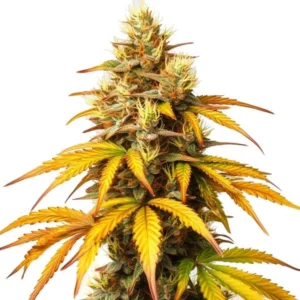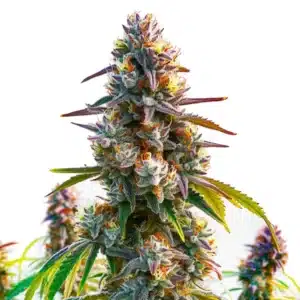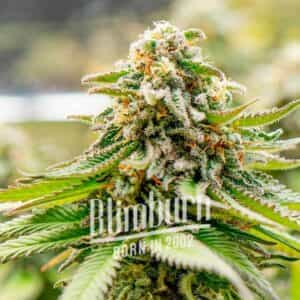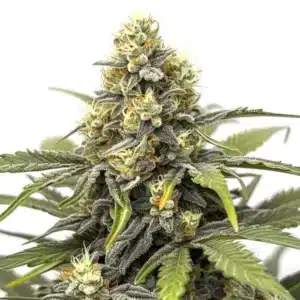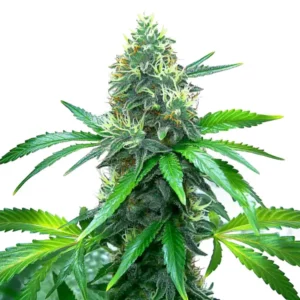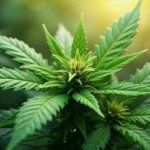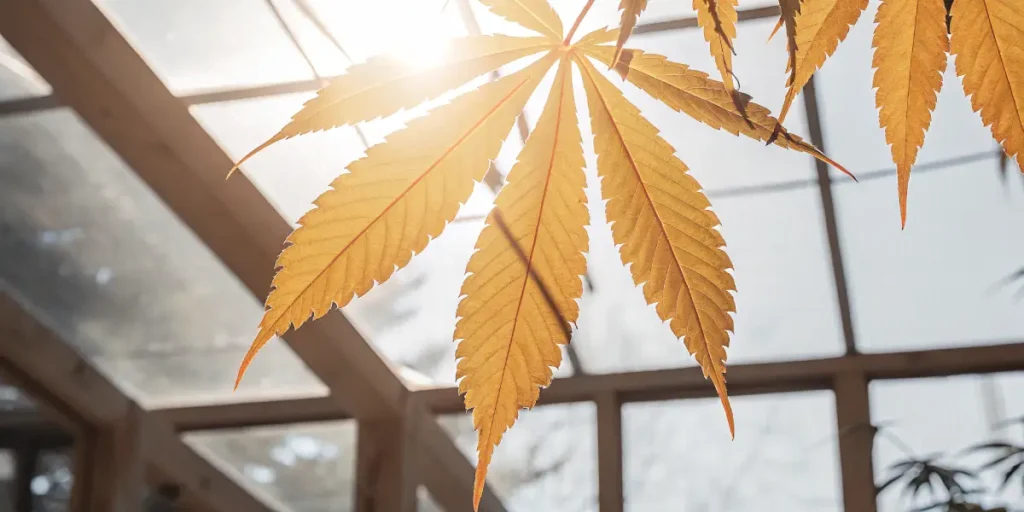
Early Signs of Dehydration in Weed Plants
Dehydration can sneak up on your weed plants quickly. When your plants don’t get enough water, they start showing signs that can affect growth and yield. Catching these early signs of dehydration in weed plants can save you time and money.
Your cannabis plants might look droopy or sad. Leaves could start curling at the edges, which is one of the early symptoms of dehydration in cannabis plants. These symptoms mean your plants need a drink.
Recommended Strains
Lemon Tree
|
|
THC | 18% - 23% (Medium) |
|
|
Type | Feminized |
|
|
Yield | Medium |
|
|
Phenotype | 45% Indica / 55% Sativa |
Lemon Tree x Channel Kush
|
|
THC | 18% - 22% (Medium) |
|
|
Type | Feminized |
|
|
Yield | High |
|
|
Phenotype | 60% Indica / 40% Sativa |
A dry soil surface is another indicator. When the topsoil feels crusty or powdery, it’s a clear signal your plants might be thirsty. However, make sure to check the soil beneath the surface too. Sometimes, surface drying doesn’t paint the whole picture.
Signs of Water Stress in Weed Plants
Water stress can lead to several visible changes. Leaves might change color, turning yellow or brown. This discoloration often starts at the tips and edges, spreading inwards. It’s a distress call from your cannabis plants.
Another sign of water stress is slow growth. If your plants are not growing as fast as they should, it’s worth checking if they’re getting enough water. Remember, healthy plants grow steadily. If growth stalls, dehydration could be the reason.
Besides to these signs of water stress in weed plants, you may notice leaves developing spots or becoming fragile. These changes occur as the plant struggles to maintain cellular integrity due to insufficient water. Addressing these symptoms quickly can prevent further damage.
Root health is also compromised under water stress. Roots may become dry and brittle, reducing their efficiency in absorbing water and nutrients. Ensuring consistent watering schedules can mitigate these issues and promote robust root development.
How to Identify Dehydration in Marijuana Plants
Observe your plants closely. Are the leaves drooping? Droopy leaves often mean the plant lacks water. It’s a common sight in dehydrated cannabis. You might also notice leaves feeling crispy or brittle to the touch.
Check the soil moisture. Stick your finger about an inch deep into the soil. If it feels dry, your plants might be dehydrated. This method is simple yet effective in identifying moisture levels.
Another method for how to identify dehydration in marijuana plants is to monitor their overall vigor. Plants suffering from dehydration may lose their usual luster and appear dull. By maintaining an observation routine, you can catch early signs of dehydration in weed plants before they worsen.
Stress tests can also help in identifying dehydration. Temporarily reducing water intake and observing plant response can highlight how well your plants handle moisture variability. This can guide you in adjusting water management strategies effectively.
Promos & Deals
Dehydration Indicators in Cannabis Cultivation
In cannabis cultivation, dehydration indicators can vary. Besides the physical signs on the plant, other factors contribute. High temperatures and low humidity levels can increase the risk of dehydration.
Using the right strain can also help. For instance, the Blue Dream strain from Blimburn Seeds is known for its resilience to environmental stress, making it a good choice for beginners. Choosing the right strain can minimize dehydration risks.
Environmental monitoring systems can be valuable in managing dehydration indicators in cannabis cultivation. These systems measure humidity, temperature, and soil moisture, providing data to optimize growing conditions and prevent dehydration.
Regular soil amendments can also aid in reducing dehydration risks. Organic matter, like compost, improves soil structure and water retention, creating a more supportive environment for cannabis plants. This proactive approach is vital in preventing dehydration.
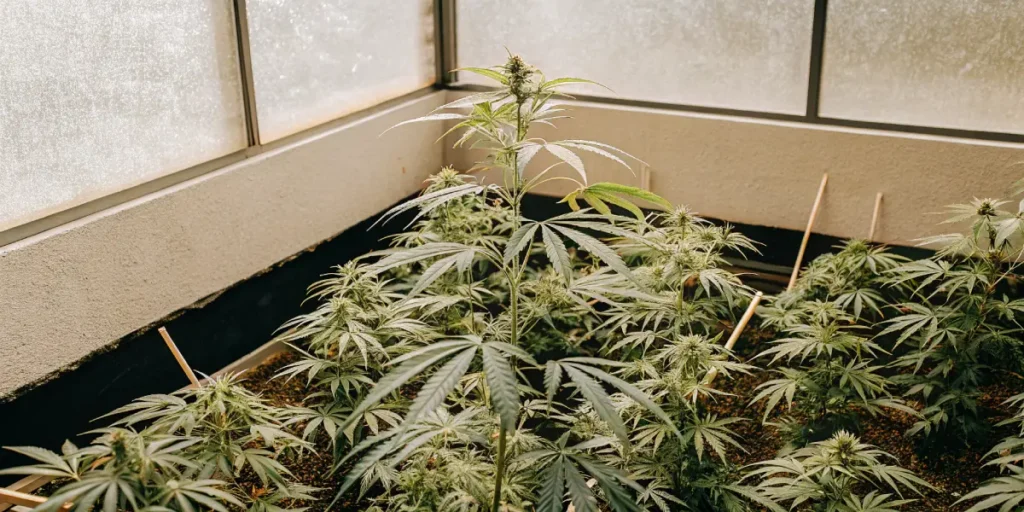
Preventing Dehydration in Marijuana Seedlings
Seedlings are especially vulnerable to dehydration. Their roots are shallow, meaning they rely more on surface moisture. Keep the soil consistently moist but not soggy to prevent dehydration.
Use a spray bottle to mist the seedlings regularly. This helps maintain a humid microclimate around them, reducing dehydration risks. It’s a simple yet effective method.
Ensuring adequate lighting can also play a part in preventing dehydration in marijuana seedlings. Proper light levels encourage strong growth without causing excessive water evaporation, balancing the plant’s water needs and promoting healthy development.
Additionally, using humidity domes can create a controlled environment for seedlings. These domes trap moisture, maintaining higher humidity levels and significantly reducing the risk of dehydration during the early growth stages.
- Monitor soil moisture regularly.
- Use mulch to retain soil moisture.
- Water early in the morning or late afternoon to reduce evaporation.
- Consider using drip irrigation for consistent watering.
- Maintain proper humidity levels in the growing area.
Real-Life Examples to Manage Dehydration
A seasoned grower might notice that their plants start wilting in the afternoon. This is often due to high midday temperatures. Adjusting the watering schedule can help manage this issue.
For example, if you’re growing the Amnesia strain from blimburnseeds.com, you might observe it needing extra water during hot days. Adjusting the watering frequency can prevent dehydration.
Experienced cultivators often rotate their crops to manage dehydration effectively. By growing more resilient strains in harsher conditions, they can ensure consistent yields despite environmental challenges. This strategic planning is key in addressing early symptoms of dehydration in cannabis plants.
Incorporating shading techniques, such as shade cloths, can also be beneficial. These methods reduce direct sunlight exposure, lowering ambient temperatures and evaporation rates, thus helping to manage signs of water stress in weed plants effectively.
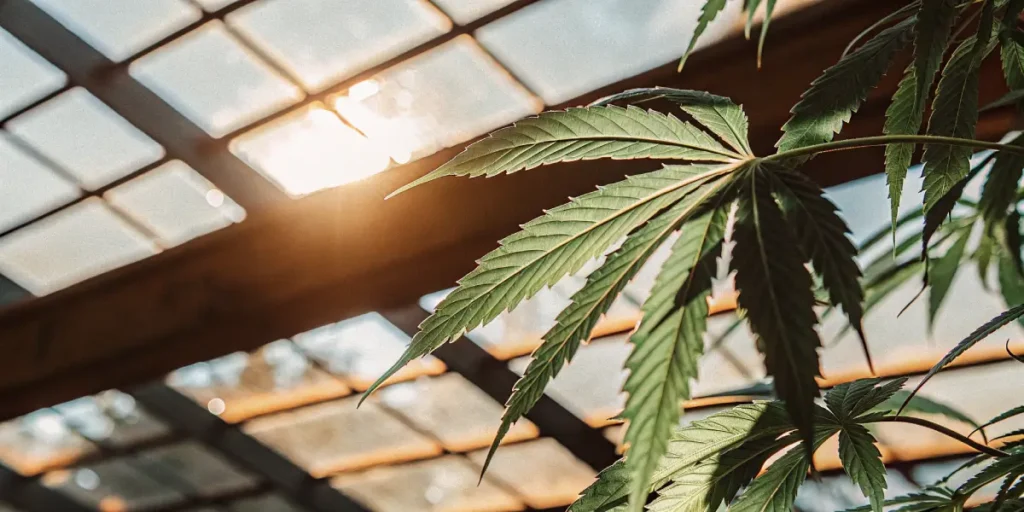
FAQs
What are early signs of dehydration in weed plants?
Early signs of dehydration in weed plants include droopy leaves and dry soil. You’ll often notice the leaves starting to curl at the edges, which is a telltale sign. These symptoms indicate that the plant is not receiving enough water.
Another sign is the leaves becoming brittle or crispy. This happens as the plant tries to conserve water, leading to a less flexible leaf structure. Keeping an eye on these signs can help in early detection.
Wilting and discoloration are also early signs of dehydration in weed plants. These symptoms, if not addressed promptly, can lead to stunted growth and reduced yields. Identifying these signs early is crucial for maintaining plant health.
Regularly assessing the overall plant appearance and soil condition can help in the early identification of dehydration. Prompt action upon noticing these signs can significantly enhance the plant’s ability to recover and thrive.
How can I prevent dehydration in marijuana seedlings?
To prevent dehydration in marijuana seedlings, ensure the soil remains consistently moist. This is crucial as seedlings have shallow roots and rely heavily on surface moisture. Avoid letting the soil dry out completely.
Misting the seedlings regularly can also help. This creates a humid environment, reducing the risk of dehydration. It’s a simple step but can make a significant difference in the health of your seedlings.
Using biodegradable pots can aid in water retention and root development for seedlings. These pots allow for better moisture distribution, helping in preventing dehydration in marijuana seedlings during critical growth phases.
Incorporating water-retentive soil mixes, which include components like peat moss or coco coir, can ensure an optimal moisture environment for young plants. This proactive approach is essential in safeguarding against early signs of dehydration in weed plants.
Are some cannabis strains more resistant to dehydration?
Yes, certain cannabis strains are more resistant to dehydration. Strains like Blue Dream, Gorilla Glue 4, and Amnesia from blimburnseeds.com are known for their resilience. These strains have adapted to tolerate varying environmental conditions.
Choosing a strain that’s resistant to dehydration can make cultivation easier. It reduces the risk of water-related stress, allowing for a more robust growth cycle.
These resilient strains are particularly beneficial in regions with challenging climates. By selecting strains that naturally withstand dehydration indicators in cannabis cultivation, growers can achieve better results with less intervention.
Additionally, breeding programs continue to develop new strains with enhanced drought tolerance. These innovations provide growers with more options to manage dehydration risks effectively and sustainably.
What are the dehydration indicators in cannabis cultivation?
Dehydration indicators include wilting plants, yellowing leaves, and slow growth. These signs often appear when the plant is not receiving adequate water. Monitoring these indicators can help in timely intervention.
Environmental factors like high temperatures and low humidity can exacerbate dehydration. Adjusting these conditions can help manage the water needs of your plants effectively.
Soil compaction is another dehydration indicator in cannabis cultivation. Compacted soil can restrict root growth and water absorption, leading to dehydration. Regularly aerating the soil can alleviate this issue.
Tracking plant transpiration rates can also provide insights into dehydration risks. High transpiration rates may indicate insufficient water availability, prompting necessary adjustments in watering practices.
Why do my marijuana plants wilt despite regular watering?
If your marijuana plants wilt despite regular watering, it could be due to overwatering or poor drainage. Overwatering can suffocate the roots, leading to similar symptoms as dehydration. Ensure your pots have proper drainage.
Another reason could be high temperatures causing rapid evaporation. Adjusting watering times to cooler parts of the day can help manage this issue. Observing your plants closely can provide insights into the underlying problem.
Improper soil composition might also be a factor. Soil that retains too much water can lead to root rot, manifesting as wilting. Balancing soil components to improve drainage can mitigate this problem.
Pest infestations can also mimic dehydration symptoms. Regularly inspecting plants for pests and diseases ensures that the true cause of wilting is identified and addressed promptly.


